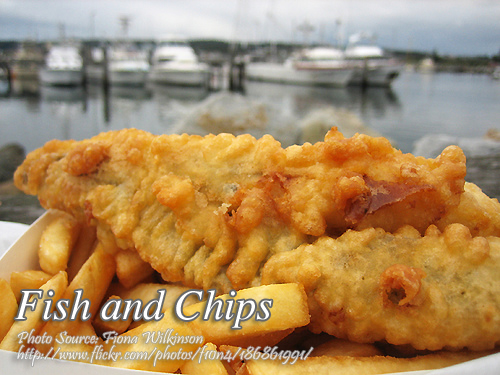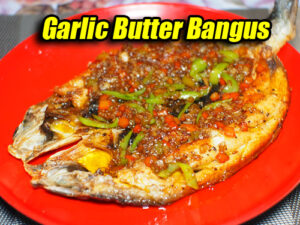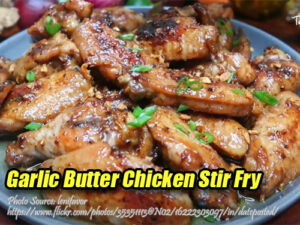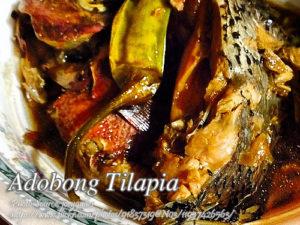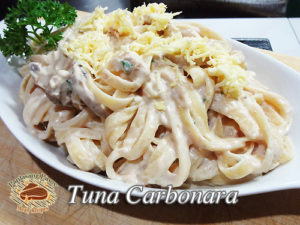Fish and chips is an English dish which have a history why it became a popular dish in England. Actually it didn’t originated there, it was introduced by Jewish immigrants. Even in the western world it is also popular so why not adapt this food also in our palate? We can use local fish fillets like lapu-lapu, labahita, cream dory or tilapia and we also have an abundant source of potatoes. Ingredients are also very basic and simple using salt and pepper, butter, flour and cooking oil.
Discovering the Rich History Behind a Classic
When we think of English cuisine, one of the first dishes that comes to mind is the beloved duo of fish and chips. This iconic pairing, with its crispy battered fish and golden fries, has become a staple not only in England but around the world. What many may not realize, however, is that this dish didn’t originate in England at all. Its roots can be traced back to Jewish immigrants who introduced it to the British palate. Over time, it became deeply ingrained in English culture, eventually earning its place as a national favorite. Given its widespread popularity, it’s no wonder that this dish has also made its way into the hearts and kitchens of food lovers across the globe. With local variations, it’s easy to adapt this comforting classic to suit our own tastes and ingredients.
A Filipino Twist on a Classic Dish
While it may be synonymous with England, there’s no reason we can’t make it our own with a few local twists. In the Philippines, we have a variety of fish that can be used to create this dish, such as lapu-lapu, labahita, cream dory, or tilapia. These local fish fillets offer a fresh and delicious alternative to the traditional cod or haddock used in the original recipe. Alongside the fish, potatoes play a starring role in this dish, and luckily, they’re an ingredient that’s readily available in our markets. The simplicity of the ingredients—flour, butter, salt, pepper, and oil—means that this dish is easy to prepare, even for beginner cooks.
Preparing the Perfect Potato Wedges
The heart of any great plate of fish and chips lies in its crispy, golden potato wedges. Achieving that perfect crunch begins with selecting the right potatoes. Once you’ve chosen your spuds, peel and slice them into wedges or long strips, depending on your preference. To enhance their flavor and texture, soak the potato slices in salted water for about an hour. This step helps to remove excess starch, ensuring that your fries are crispy on the outside while remaining fluffy on the inside.
When it comes to frying, a wire basket can be incredibly useful for achieving evenly cooked wedges. Heat your oil in a deep pan and carefully lower the potato slices into the hot oil. Fry them until they reach a golden brown hue, indicating that they’re perfectly cooked. Once done, transfer the wedges to a paper towel-lined platter to drain off any excess oil. The result is a batch of fries that are delightfully crunchy on the outside and tender on the inside—a perfect complement to the fish.
Crafting the Perfect Fish Fillet
With the fries ready, it’s time to focus on the fish. The key to a great fish fillet lies in the batter, which provides a crisp, flavorful coating. To start, combine flour, melted butter, salt, and pepper in a bowl. This forms the base of your batter, and adding an egg helps to create a smooth, cohesive mixture that will cling to the fish. Make sure each fillet is evenly coated with the batter, ensuring that every bite is packed with flavor.
Deep-frying the fish fillets requires a careful balance of heat and timing. The oil should be hot enough to cook the batter quickly, creating a crispy exterior while keeping the fish inside moist and tender. Once the fillets have turned a rich, golden brown, remove them from the oil and let them drain on a paper towel. This step is crucial in removing any excess oil, leaving you with a light, crispy fish that’s ready to be enjoyed.
Serving Up a Plate of Comfort
When it comes to serving this dish, simplicity is key. Arrange the crispy fish fillets and golden potato wedges on a platter, and you’re ready to enjoy a meal that’s both satisfying and comforting. This dish is best enjoyed fresh, while the fish is still hot and the fries are at their crispiest.
A Dish Steeped in History and Flavor
Fish and chips may have started as an immigrant’s offering, but it has grown into a dish that represents comfort and tradition. Whether you’re enjoying it in a quaint English pub or creating your own version at home with local ingredients, there’s something timeless about this simple yet flavorful meal. By incorporating local fish varieties and adding a personal touch, you can make this classic dish your own. So why not try your hand at making it at home? It’s an opportunity to explore a bit of history while enjoying a delicious, homemade meal.
How to Cook Fish and Chips
Ingredients
- 1/2 kilo fish fillets lapu-lapu, labahita or cream dory, cut into serving pieces
- salt and pepper to taste
- 1 cup flour
- 1/2 Tbsp. melted butter
- 1 egg
- 1/2 kilo potatoes
- salt to taste
- water
Instructions
How to cook Fish and Chips:
- To make the chips or potato wedges. Peel and slice potatoes into wedges or long strip.
- Soak in salted water for 1 hour.
- Heat oil in pan and deep fry the potatoes like french fries until golden brown.
- The best way to cook them is with a wire basket.
- Transfer to a paper towel-lined platter to drain off excess oil.
- Now, make the fish fillets. In a small bowl, mix together flour, melted butter, salt and pepper. Add the egg to make the batter.
- Dip each piece of fish in the batter, making sure it is coated on all sides.
- Heat oil in pan and deep-fry fish fillets until golden brown. Remove and drain well.
- Serve fish and chips on a platter.
Notes
Cooking Tips:
Use Cold Batter for Extra Crispiness
To achieve an extra crispy coating on your fish, make sure the batter is cold before dipping the fillets. The contrast between the cold batter and hot oil helps create a light, crunchy crust. Keep the batter in the fridge until you're ready to fry for the best results.Double-Fry the Potatoes for Perfect Wedges
For perfectly crispy potato wedges, consider double-frying them. Fry the potatoes once at a lower temperature to cook them through, then remove and let them cool. Fry them a second time at a higher temperature to get that golden, crunchy exterior.Pat the Fish Dry Before Battering
Before dipping the fish fillets into the batter, ensure they are thoroughly patted dry with paper towels. Excess moisture on the fish can make the batter slide off and result in a soggy coating. Dry fillets will hold the batter better and fry to a perfect golden brown.
